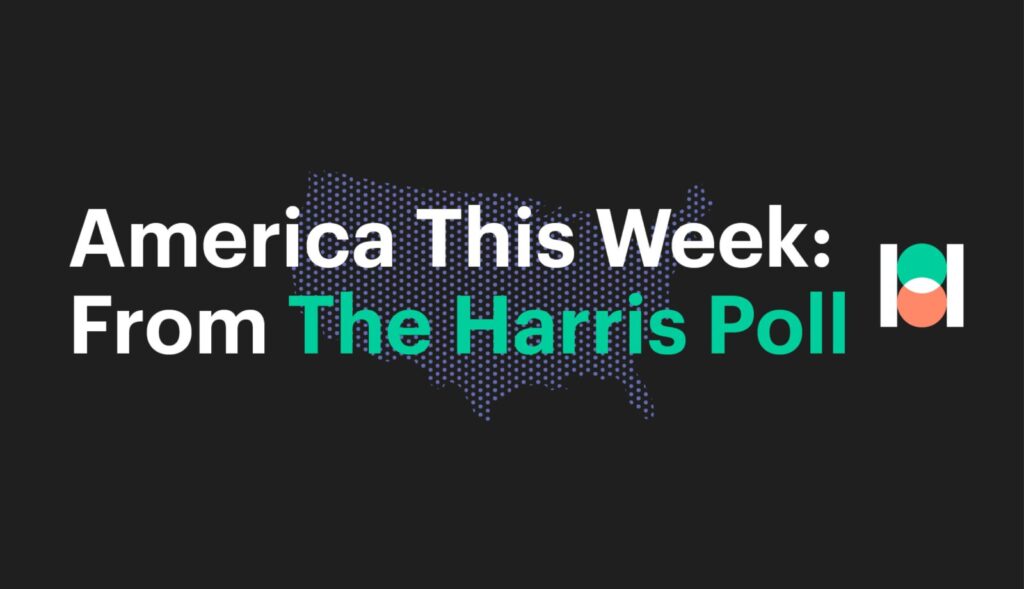Brief • 5 min Read

A recent study by The Harris Poll and the Chicago Council on Global Affairs in November 2020, surveying residents of America’s largest metropolitan areas about their perspectives on urban living and the condition of their cities, reveals that even though the pandemic has had a negative impact, residents are still invested in the well-being of their cities.
One key aspect of large city living is transportation use and access; however, transportation is often a primary source of pollution in highly populated areas. For those living in America’s largest cities, nearly two in five (39%) point to transportation or the environment and climate change as issues in their city that most concern them. More than half (56%) also say cities should be doing more to combat climate change.
Advocates working to curb the effects of human-influenced climate change have often proposed local transportation alternatives as one solution to climate change. Large cities, where residents regularly use different types of transportation, are perfect areas for experimenting with such solutions.
Openness to Transportation Alternatives
Employees, for example, are often the most frequent users of private and public transportation. Encouraging this group to embrace alternative or public transportation more often would be effective at reducing local pollution.
Currently, likely influenced by the pandemic, 43% of employed residents in large metropolitan areas say they work outside their home. However, most (80%) travel to work by driving alone while another one in 10 use public transit. When asked which types of transportation alternatives they would be willing to consider, in aggregate, less than half express interest in public transit (47%), bicycles (both electric and non-electric) (43%), and electric scooters (37%).
There are some regional differences in alternative transportation acceptance. Most employed residents living in Philadelphia (58%), New York City (51%), and Houston (51%) express a willingness to consider public transit. Houston residents also show an interest in bicycles, both manual and electric (52%), while most Philadelphia residents are open to electric scooters (54%).
Perhaps unsurprisingly, those living specifically in central city or downtown areas also show openness to public transit (63%) and bicycles (54%). This may be due to increased access to these alternatives because of where they live in their cities.
Identifying Hesitancy Factors
Understandably, the majority reluctant to use alternative transportation cite concerns related to health and personal safety as well as traffic and transit times.
Those hesitant to consider public transit mention COVID-19 concerns most often (50%). COVID-19 is especially concerning to those living closer to the city center (56%) as well as those living in New York (55%), Los Angeles (54%), and Chicago (53%) — areas especially affected by the high infection rates. However, this hesitant group is also deterred by too much time in transit (43%) and personal safety concerns (32%).
Another fifth say they would never consider public transit. Such sentiment is especially high among Phoenix residents (31%), perhaps given fewer public transit options compared to cities on the East Coast like New York.
Those against using bikes or electric bicycles to commute most often say they are disinterested because the distance to work is too far (43%) and they are concerned about traffic safety (32%). Distance from work is a particular concern for most residents living in Chicago and Houston while COVID-19 safety concerns were more pronounced for residents across the country that lived in city centers or downtown.
Similar to public transit, overall, a fifth of those hesitant to use bikes say they would never use this form of transportation. Again, such sentiment is higher among Phoenix residents (31%) but also month New York residents (26%).
Employed residents of America’s largest cities are more averse to electric scooters than other forms of alternative transportation. Nearly a third of those opposed to considering electric scooters for their commutes say they would never consider this transportation (30%). Traffic and personal safety concerns (35% and 31%, respectively) were primary deterrents for this hesitant group. Such results are not surprising, especially for those living in the suburbs and cities like Phoenix where there is relatively little to no infrastructure for electric scooters.
Infrastructure for Alternative Transportation
Despite divided support for transportation alternatives, residents of America’s largest cities still want to make sure infrastructure is in place for these alternatives. Over three quarters (77%) of residents support additional infrastructure for bicycles and other very small vehicles. Residents of Philadelphia (82%) and Phoenix (83%) are especially supportive of such development.
The latter city is especially surprising since Phoenix residents displayed some of the lowest interest in transportation alternatives, but across the board, Phoenix residents are more enthusiastic about transportation investments than any of the other metropolitan areas surveyed for this study.
That said, residents in America’s largest cities still support more infrastructure geared towards private transport, including the construction of widened roads (75%) and additional highways (64%).
Given these residents want to see such infrastructure created for alternative transportation, they do see the value in such transportation. If city leadership teams can address points of hesitation among residents to reduce obstacles to adoption, they may become more effective at addressing climate change created by personal transportation.
Pursuing International Collaboration
With large cities around the world pushing for and implementing strategies to mitigate human-influenced climate change, large American cities also have the opportunity to collaborate internationally on such goals. In fact, most residents in these areas agree with such efforts. Eighty-six percent say it is important that their city engage internationally with other cities and governments to address climate change; 58% say it is very or extremely important that their city do so.
Looking Beyond the Pandemic
Cities are America’s economic, technological, and cultural hubs, but they are also centers of heavy pollution due to higher transportation use. An ongoing pandemic coupled with new, incoming leadership across the country means the fate of urban areas is now a primary concern for lawmakers and residents alike. Current infrastructure coupled with the pandemic has prevented many city residents from considering transportation alternatives. However, cities that can address COVID-19 concerns, and invest in the development that ensures residents who both live in and commute to the city center can easily access shared transit services, will be best positioned to transform future transportation habits. Such transformation would be a significant step toward ensuring a more eco-friendly, post-pandemic future for America’s cities.
Methodology
This survey was conducted online within the United States between November 5, 2020, and November 16, 2020, among 1,200 adults (aged 18 and over) by The Harris Poll on behalf of the Chicago Council on Global Affairs. The respondents surveyed were evenly divided among six U.S. metropolitan regions: New York City, Los Angeles, Chicago, Houston, Philadelphia, and Phoenix. Respondents self-identified the community type (i.e., central city/downtown, inner suburb, outer suburb/exurb, and rural) in which they lived. Figures for age, sex, race/ethnicity, education, region, and household income were weighted where necessary to bring them into line with their actual proportions in the population. Propensity score weighting was used to adjust for respondents’ propensity to be online.
All sample surveys and polls, whether they use probability sampling, are subject to multiple sources of error which are most often not possible to quantify or estimate, including sampling error, coverage error, error associated with nonresponse, error associated with question wording and response options, and post-survey weighting and adjustments. Therefore, the words “margin of error” are avoided as they are misleading. All that can be calculated are different possible sampling errors with different probabilities for pure, unweighted, random samples with 100% response rates. These are only theoretical because no published polls come close to this ideal.
Respondents for this survey were selected from among those who have agreed to participate in our surveys. The data have been weighted to reflect the composition of the adult population of each metropolitan area. Because the sample is based on those who agreed to participate in the online panel, no estimates of theoretical sampling error can be calculated.
Responses in this survey were tested for statistical significance using a Z-test with a confidence level of 95% and a Z-test with a confidence level of 90%. For more information on methodology, please contact Dami Rosanwo.
To explore more insights from our Future of Cities research, click here.
Subscribe for more Insights
Subscribe to our newsletter for the latest trends in business, politics, culture, and more.
Download the Data
Get the full data tabs for this survey conducted online within the United States by The Harris Poll on behalf of Chicago Council on Global Affairs between November 5-16, 2020, among 1,200 U.S. adults ages 18 and older.
Download
Subscribe for more Insights
Subscribe to our newsletter for the latest trends in business, politics, culture, and more.
Download the Data
Get the full data tabs for this survey conducted online within the United States by The Harris Poll on behalf of Chicago Council on Global Affairs between November 5-16, 2020, among 1,200 U.S. adults ages 18 and older.
DownloadRelated Content








